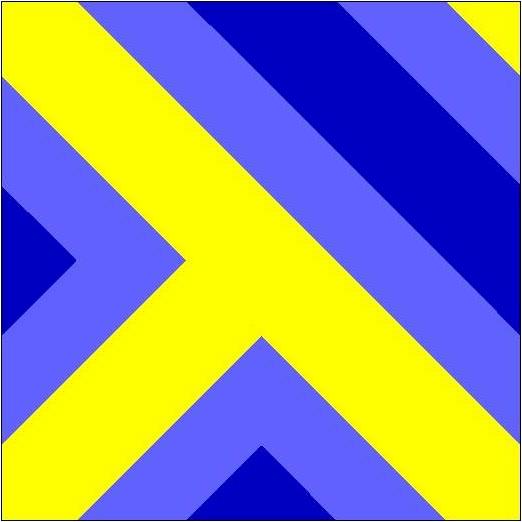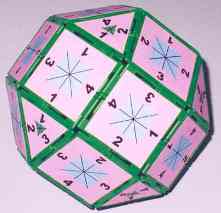Consider infinitely many copies of a single square tile and cover the plane with them, without gaps and without overlaps (a tiling of the plane), with the vertices making a square point lattice. Choose a point in a tile. If there is a tiling of the plane where this point is a rotation center of order n, one says that it is a rotation center of order n of the tile itself.
Tiles can only have two or four rotation centers of order 4 located in the middle of the edges.
Articulated tiles have two, and only two, rotation centers of order 4 in the middle of two edges; this means that the other two are not rotation centers of order 4. Moreover, they have a natural ''division'' in the four squares that one can obtain by drawing the two lines that connect the middle of oposite edges. These squares form a kind of matrix with two rows and two columns (2×2).
Tiles can only have two or four rotation centers of order 4 located in the middle of the edges.
Articulated tiles have two, and only two, rotation centers of order 4 in the middle of two edges; this means that the other two are not rotation centers of order 4. Moreover, they have a natural ''division'' in the four squares that one can obtain by drawing the two lines that connect the middle of oposite edges. These squares form a kind of matrix with two rows and two columns (2×2).
Articulated tiles must also have some other properties that classify them in three disjoint families.
-
Properties of the three families of articulated tiles:
-
a) The first family of articulated tiles. The two rotation centers of order 4 are located in the middle of two edges with a common vertice. Each one of the four small squares of the tile remain invariant under a rotation by an angle of 180º.

b) The second family of articulated tiles. The two rotation centers of order 4 are located in the middle of two opposite edges. If one translates (exchanges) the two small squares of each diagonal of the tile, the tile does not change.
-
c) The third family of articulated tiles. The two rotation centers of order 4 are located in the middle of two opposite edges. Each one of the four small squares of the tile remain invariant under a rotation by an angle of 180º.

See also:

















.jpg)
.jpg)
.jpg)


.jpg)
.jpg)




